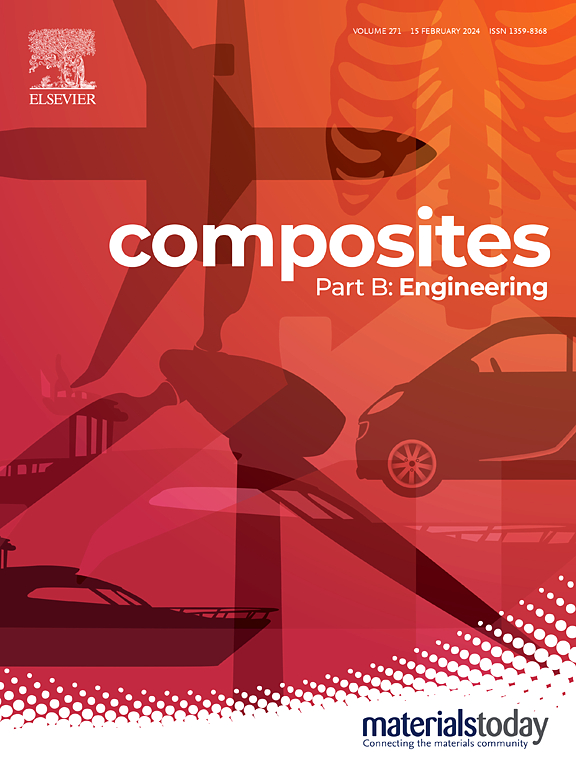Dynamic dual-network hydrogel microspheres for enhanced nucleus pulposus regeneration via extracellular matrix mimicry
IF 12.7
1区 材料科学
Q1 ENGINEERING, MULTIDISCIPLINARY
引用次数: 0
Abstract
The degeneration of intervertebral discs (IVD) remains a significant challenge in regenerative medicine. This study introduces novel hydrogel microspheres (GelMA-FCD-GA) designed to mimic the native extracellular matrix (ECM) of nucleus pulposus cells (NPCs). These microspheres integrate Gelatin Methacrylate (GelMA) with Fucoidan (FCD) and are further modified with aldehyde groups (GA) to establish a dynamic viscoelastic scaffold capable of transducing mechanical signals and promoting cellular functions. In vitro, GelMA-FCD-GA microspheres enhanced mitochondrial function and antioxidant capacity of NPCs, with increased expression of respiratory chain factors and reduced reactive oxygen species. In vivo, the transplantation of NPC-laden GelMA-FCD-GA microspheres into Rat caudal IVDs demonstrated significant regenerative effects, as evidenced by improved MRI signals, restored disc height, and favorable histological outcomes compared to controls. This innovative approach presents a significant advancement in IVDD treatment, combining the mechanical benefits of bioactive materials with the bioactive properties of fucoidan. The dual-network design supports cell adhesion and growth and dynamically adapts to the physiological environment, offering a robust platform for regenerative medicine applications.
通过细胞外基质模拟增强髓核再生的动态双网络水凝胶微球
椎间盘退变(IVD)仍然是再生医学的一个重大挑战。本研究介绍了一种新型水凝胶微球(GelMA-FCD-GA),旨在模拟髓核细胞(NPCs)的细胞外基质(ECM)。这些微球将甲基丙烯酸明胶(GelMA)和岩藻多糖(FCD)结合在一起,并进一步用醛基(GA)修饰,以建立一种能够传导机械信号和促进细胞功能的动态粘弹性支架。在体外,GelMA-FCD-GA微球增强了NPCs的线粒体功能和抗氧化能力,增加了呼吸链因子的表达,降低了活性氧的含量。在体内,与对照组相比,装载npc的GelMA-FCD-GA微球移植到大鼠尾侧ivd中显示出显著的再生效果,MRI信号改善,椎间盘高度恢复,组织学结果良好。这种创新的方法结合了生物活性材料的机械效益和岩藻糖聚糖的生物活性特性,在IVDD治疗中取得了重大进展。双网络设计支持细胞粘附和生长,并动态适应生理环境,为再生医学应用提供了一个强大的平台。
本文章由计算机程序翻译,如有差异,请以英文原文为准。
求助全文
约1分钟内获得全文
求助全文
来源期刊

Composites Part B: Engineering
工程技术-材料科学:复合
CiteScore
24.40
自引率
11.50%
发文量
784
审稿时长
21 days
期刊介绍:
Composites Part B: Engineering is a journal that publishes impactful research of high quality on composite materials. This research is supported by fundamental mechanics and materials science and engineering approaches. The targeted research can cover a wide range of length scales, ranging from nano to micro and meso, and even to the full product and structure level. The journal specifically focuses on engineering applications that involve high performance composites. These applications can range from low volume and high cost to high volume and low cost composite development.
The main goal of the journal is to provide a platform for the prompt publication of original and high quality research. The emphasis is on design, development, modeling, validation, and manufacturing of engineering details and concepts. The journal welcomes both basic research papers and proposals for review articles. Authors are encouraged to address challenges across various application areas. These areas include, but are not limited to, aerospace, automotive, and other surface transportation. The journal also covers energy-related applications, with a focus on renewable energy. Other application areas include infrastructure, off-shore and maritime projects, health care technology, and recreational products.
 求助内容:
求助内容: 应助结果提醒方式:
应助结果提醒方式:


